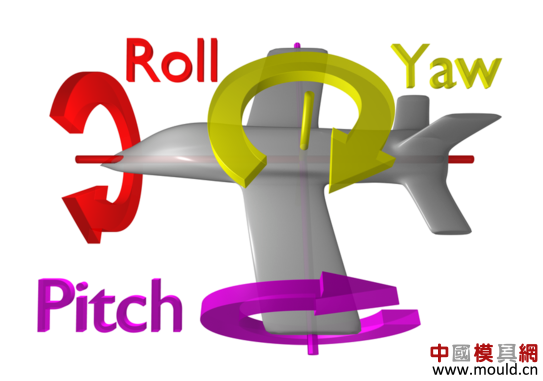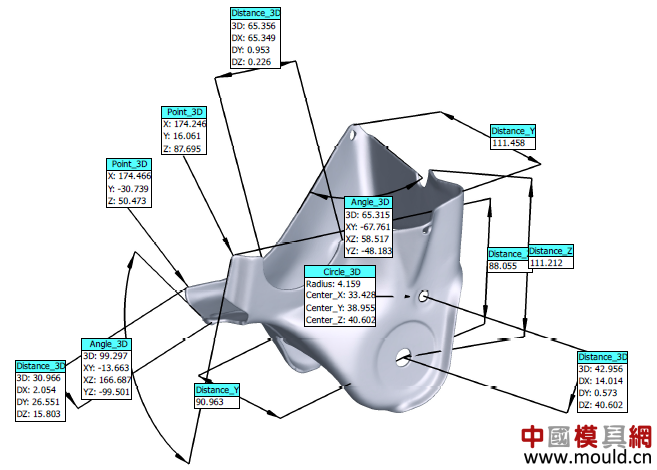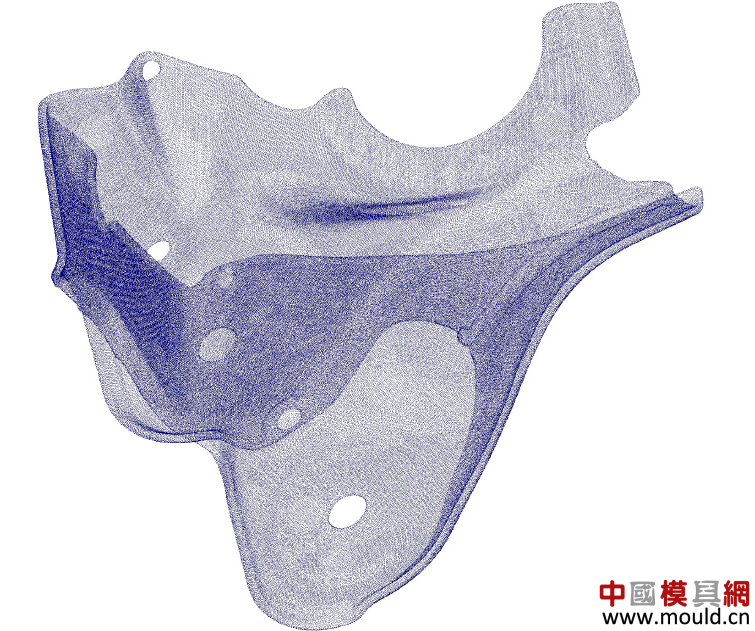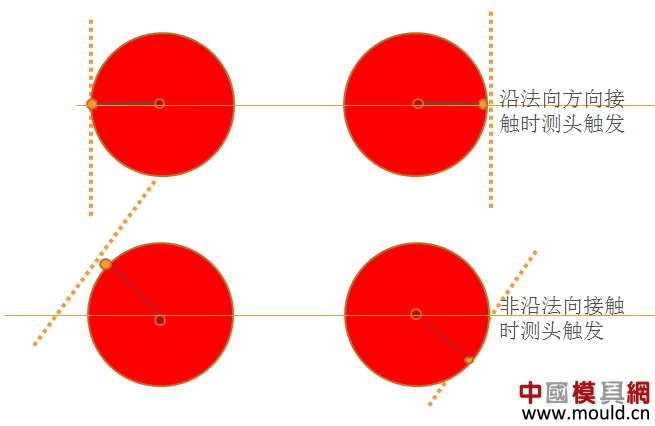Probe type characteristics and options
"Trigger probe and scanning probe which is better?"
"Is the scanning probe more accurate?"
These problems not only made the users who first came in contact with the coordinate measuring machine, even the old users who already had multiple three-coordinates, and even those who were engaged in the sales of coordinate measuring machines. In the process of selecting a three-coordinate probe, it often occurs that the configuration is finally determined by the budget, resulting in a situation of excess configuration or insufficient configuration.
When we configure the probe of a coordinate measuring machine, we actually face difficulties in selecting from several aspects, such as "fixed or rotary type", "scan probe or trigger probe", "three-axis linkage or five-axis linkage." "Contact probes or optical probes" and so on, and ultimately can not escape the budget limit. Although the last factor can sometimes play a veto role, it is necessary for us to understand the characteristics of the various types of probes and the applicable occasions and limitations from a technical point of view so that the most appropriate probes can be selected under comprehensive conditions to meet the requirements. Measurement requirements.
[Trigger probe and scanning probe]
In fact, to examine the difference between the trigger probe and the scanning probe, it is necessary to proceed from the characteristics of the measurement task. As we all know, the coordinate measuring machine can perform all-round measurement from size to shape and position tolerance, belonging to general-purpose detection equipment. However, a single dimension measurement, such as length, diameter, angle, etc., can basically be measured by a simple measuring tool. There is no irreplaceable significant advantage of the three-axis coordinate measurement; and the behavioral tolerance measurement involves many aspects, such as the measurement reference. , fitting methods, measurement principles, etc., must rely on the coordinate measuring machine as a systematic whole to carry out, this is the main reason that the coordinate measuring machine has irreplaceability.
As the name suggests, shape and position tolerances actually include two different types of element feature evaluation content. One is shape tolerance and the other is positional tolerance. Shape tolerances include straightness, flatness, roundness, cylindricity, line profile, and profile; positional tolerances include parallelism, verticality, tilt, position, concentricity, concentricity, and symmetry. . In addition, there is a special type of geometrical position tolerance known as bouncing, including radial/face circular runout and radial/face full runout. Bounce is, in essence, evaluating the shape error of the measured element, so we might as well classify it into shape error.

Geometric tolerance
We use a circle as an example to evaluate its diameter, position, and roundness, respectively. As we all know, the minimum number of measuring points required to determine a circle is three, so that a theoretical circle can be fitted and the roundness of the circle is zero. In an actual measurement, it is rare that the measured circle is determined with only 3 points. Even for non-critical dimensions with large tolerances, at least 4 points are collected to determine the measured circle so as not to be affected by the interference factors. It is true that for a circle with a single point error distribution (singular point without mutation), measuring 4 points, 8 points, or 12 points has a very small influence on the final diameter and position (less in the tolerance zone). In the case of a small case, especially for the circle obtained by least-squares fitting; however, the effect of the number of points on the roundness is indeed not negligible. According to the analysis and calculation of the system, the number of measuring points N needed to accurately evaluate the roundness of the measured circle is not less than 64 [1].
This number of measuring points gives us very clear instructions. If there is a measurement requirement for roundness in the measurement requirements for the part under test, a scanning probe is required. Imagine that if a circle of 64 measuring points is measured with a single-point touch probe, the measurement efficiency is obviously unacceptable. Starting from the measurement efficiency and rationality, in fact not only roundness, other types of shape tolerance measurements should use continuous scanning probe, otherwise it is difficult to accurately assess the shape tolerance of the measured element.
Based on the above analysis, can it be understood that the scanning probe is an upgraded version of the triggering probe and that scanning probes are selected as far as the budget allows? The answer is also negative. When the scanning probe performs single-point triggering, the working mode of the scanning probe is very different from the triggering probe. The sampling point of the trigger probe occurs at the beginning of the probe trigger; the scan probe uses the analog signal conversion method. The single sampling point occurs when the probe trigger ends and the stylus leaves the surface of the object. The most obvious difference between these two different sampling methods is that the speed of the triggered probe is significantly higher than that of the scanning probe. The feeling of triggering the picking point of the probe gives a feeling of “one touch and retreatâ€, while the scanning probe adopts the point that after the stylus hits the workpiece, it will stick to the surface of the workpiece for a short time and then slowly retreat to leave the surface of the workpiece. Therefore, when there is no scanning measurement requirement, the use of a touch-trigger probe is higher on the measurement efficiency than on the scanning probe.
It is also worth mentioning that some specific functions must rely on scanning probes to achieve such as "self-centering." The “self-centering†application is generally used to find the center point of the hole, the bottom of the groove, etc. This requires the probe to have a search function until the analog signal of the probe reaches a stable state that meets the conditions. Take the point that this function is a "touch and retreat" trigger probe that cannot be achieved.
[Stationary probes and rotary probes]
Again, this is not a good proposition, but only the differences in the original intention of the design lead to differences in the application. Compared with rotary probes, the most significant advantage of fixed probes is their stylus carrying ability. Due to its inherent advantages in structural design, fixed probes are generally allowed to carry larger stylus weights and lengths than rotary probes. Therefore, in the occasions where there is a need for deep hole measurement and large part measurement, it is more common to choose a fixed probe. However, when we perform more complex measurement tasks, because the probe cannot change the angle, we need to configure the suction cup according to different stylus directions. Therefore, for a coordinate measuring machine equipped with a fixed probe, the double-layer or even three-layer replacement needle holder is very common, and the needle changing operation during the measurement process is also quite frequent. The rotary probe comes into being to overcome this weakness of the fixed probe. The pitch and deflection functions of the probe head can greatly improve the measurement flexibility without changing the needle, but the rotary probe flexibility At the same time, it has sacrificed some of the stylus carrying ability.
There is a view that the accuracy of fixed probes is higher than that of rotary probes, and this statement is somewhat partial. Indeed, high-precision fixed probes do have absolute advantages for metrological-level geometries (sub-micron); however, for conventional applications, and there are no measurement requirements such as deep holes, the fixed probes Rotary probes do not have any precision advantages.
[Three-axis linkage and five-axis linkage]
Here we do not want to compare the performance of two different systems, but more to do a bit of knowledge of the five-axis system. First, the so-called "five-axis probe system" does not mean that the probe system itself has five axes, but the two rotary axes of the probe system and the three linear axes of the coordinate measuring machine form a five-axis system. In fact, the five-axis probe is also a category of rotary probes. The difference between it and the ordinary rotary probe is whether the rotary axis can be "linked." The A/B axis of an ordinary rotating probe can provide two angles of Yaw and pitch, but its angle can only be changed in the non-measurement state, and the other three linear axes must remain still. Therefore, such systems are also referred to as "3+2 systems."

Five-axis system
The five-axis system can bring the motion of two rotating axes into real-time measurement, and works in conjunction with three linear axes to achieve the effect of measuring the edge of the probe part. Therefore, it can bring more flexibility than the three-axis system. With the advancement of today's industrial technology, five-axis machining equipment has begun to be applied to the processing of complex parts. However, this trend has not yet been popularized in the field of measurement. The vast majority of coordinate measuring machines still remain in the traditional three-axis or Four-axis technology level. The inequality between "five-axis machining" and "three-axis measurement" is bound to bring about certain difficulties in measurement, resulting in blind spots for measurement.
Another difference between a five-axis system and a three-axis system is the division of its rotation axis. The rotation axis of the three-axis system is only used to change the probe angle and does not participate in the measurement. Therefore, it has a certain angle index value; but five The axis of rotation of the shaft system is involved in the measurement process. The probe angle is continuously changed. In other words, the probe angle of the five-axis system is infinitely variable. Let's think about this situation: In the preparation of the measurement program, we configure and calibrate the required probe angle for the orientation of the part under test. When the next part is placed on the workbench but its attitude is not consistent with the previous part, the previous probe angle may no longer apply. Therefore, when doing batch measurements, we have a certain degree of requirements for the position and attitude of the parts. For the five-axis system, the requirements in this respect will be much looser. The infinitely variable nature of the probe makes it possible to adjust the probe according to the alignment of the part coordinate system, avoiding the situation where the probe angle does not apply.
[Contact probes and optical probes]
In recent years, some misleading propaganda has become popular, leading some users to have too high expectations for optical probes, such as "sweeping with an optical probe, all sizes of parts are coming out," etc. There is actually a lot of misunderstanding. From the current state, the contact and optical probes are mainly complementary to each other rather than competing.


What exactly can the contact and optical probes complement each other? This point also needs to start with the types of optical probes. Three-dimensional optical probes have different classifications, such as point light sources, line light sources, and surface light sources, and there are significant differences in the application of different probes. We roughly divided the application of optical probes into two categories: surface digitization and three-dimensional measurement. Some people cannot help but wonder if surface digitalization and 3D measurement are not the same thing. In fact, the key to distinguishing between the two applications is whether to generate a digital surface model (also known as a point cloud or a triangular mesh). Of course, in many practical applications, the generated digital surface model will also be used for surface or feature element measurement. However, this measurement mode is based on a digitized part model, which is fundamentally different from the traditional direct measurement feature element.
For the digitization of the surface, the purpose is to obtain the surface profile of the part, which requires a large number of coordinates of the spatial point of the contour. For contact probes, the point-by-point acquisition method cannot meet the requirements of millions of order points. Even if it is a continuous scanning probe, it only increases the pick-up speed by means of the probe without leaving the surface of the part. In essence, it is still a single point of acquisition. In this type of application, the line light source and surface light source probes make up for the lack of a contact probe. The line scan probe can scan a region by moving a laser beam from several points on the surface of the workpiece. The probe is to obtain a point cloud in a specific size area at a time through a set of coded light grids.
After obtaining the digital surface model, the user can use the data for various purposes, such as comparing with the CAD model, obtaining the deviation of the overall/local contour of the part, three-dimensional measurement or reverse engineering and so on. However, when this measurement method is used for size and behavior tolerance measurement, it usually cannot meet the requirements of the measurement process (such as establishing a measurement datum, selecting an element fitting method, selecting an evaluation reference, etc.). However, some parts do not need contactless measurements because of their special characteristics, such as soft materials, surfaces that are not allowed to touch, microscopic features, etc., or requirements for measurement efficiency. For this type of application, point-light probes also make up for the lack of touch probes.
In fact, optical probes have another advantage over contact probes. When the contact probe adopts a point, the probe records the spatial coordinates of the center of the ball, and then compensates according to the radius of the ball to obtain the coordinates of the actual point. However, when measuring a three-dimensional curve at a specific location, if the point is not taken in the normal direction of the measurement point, there will be a radius compensation cosine error; and if the point is taken in the normal direction of the measurement point, the actual measurement point position will be generated again. Deviations occur. This situation is especially common when measuring turbine blades.

The non-contact optical probe directly uses the reflection signal of the light spot to obtain the coordinates of the measured point, and there is no link of radius compensation, so the source of cosine error generation can be completely eliminated. Furthermore, in the measurement of volatile parts, although the force is not large, the part will still be deformed under the force (for example, the thin blade in the figure below, when the top section is measured, the blade is affected by the force Bend toward the back of the leaf, and vice versa). Although the amount of bending deformation is not large, considering the thinness of the blade itself, the relative amount of deformation is still very considerable, and it will have a great influence on the resulting profile and position.
In addition to the point probe, the surface light source camera-type probe can also have three-dimensional measurement capabilities, but when the camera-type probe is used as a three-dimensional measurement, it is not based on the obtained point cloud, but directly depends on the captured three-dimensional image. Extract the measured element. Moreover, when the camera-type probe is used for three-dimensional measurement, it is not used alone, but with the contact probe together, the contact probe is responsible for establishing the measurement reference, and the camera-type probe is for some special element characteristics (such as Holes, slots, etc.) are measured.
Although the optical probe has some advantages that cannot be provided by contact probes, it does not completely replace contact probes. The reason is that the accessibility of light is not as good as that of touch probes. Each part of the ball can be used to contact the object to be measured. However, the light is transmitted along a straight line. We cannot allow the light to "turn". There must be some features that make the light impossible, such as a small ratio of diameter to depth. The contact probe is more convenient than the optical probe in the case of a hole or in the case of an L-shaped stylus.
[Conclusion]
There is no best probe, but no universal probe. Ultimately, it depends on the measurement requirements. In the face of a variety of complicated probe types, it is not possible to find a truly suitable product without using a budget-oriented approach or seeking an all-round probe. Quality control can be done quickly and well.
Paper Machine Rubber Roller,Roller For Die Cutting Machine,Roller For Mining Industry,Rubber Roll For Stamping
Taixing Jinlong Rubber Rollers Co., Ltd. , https://www.jinlongroller.com